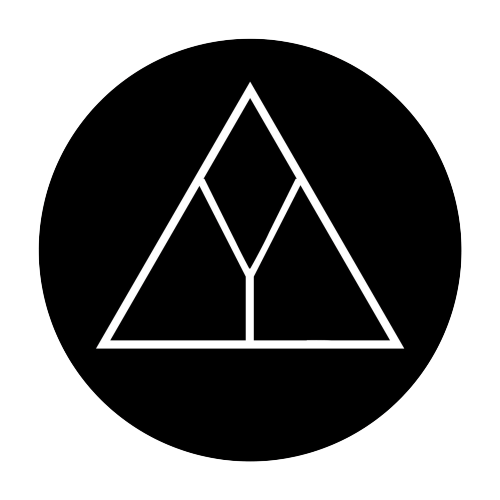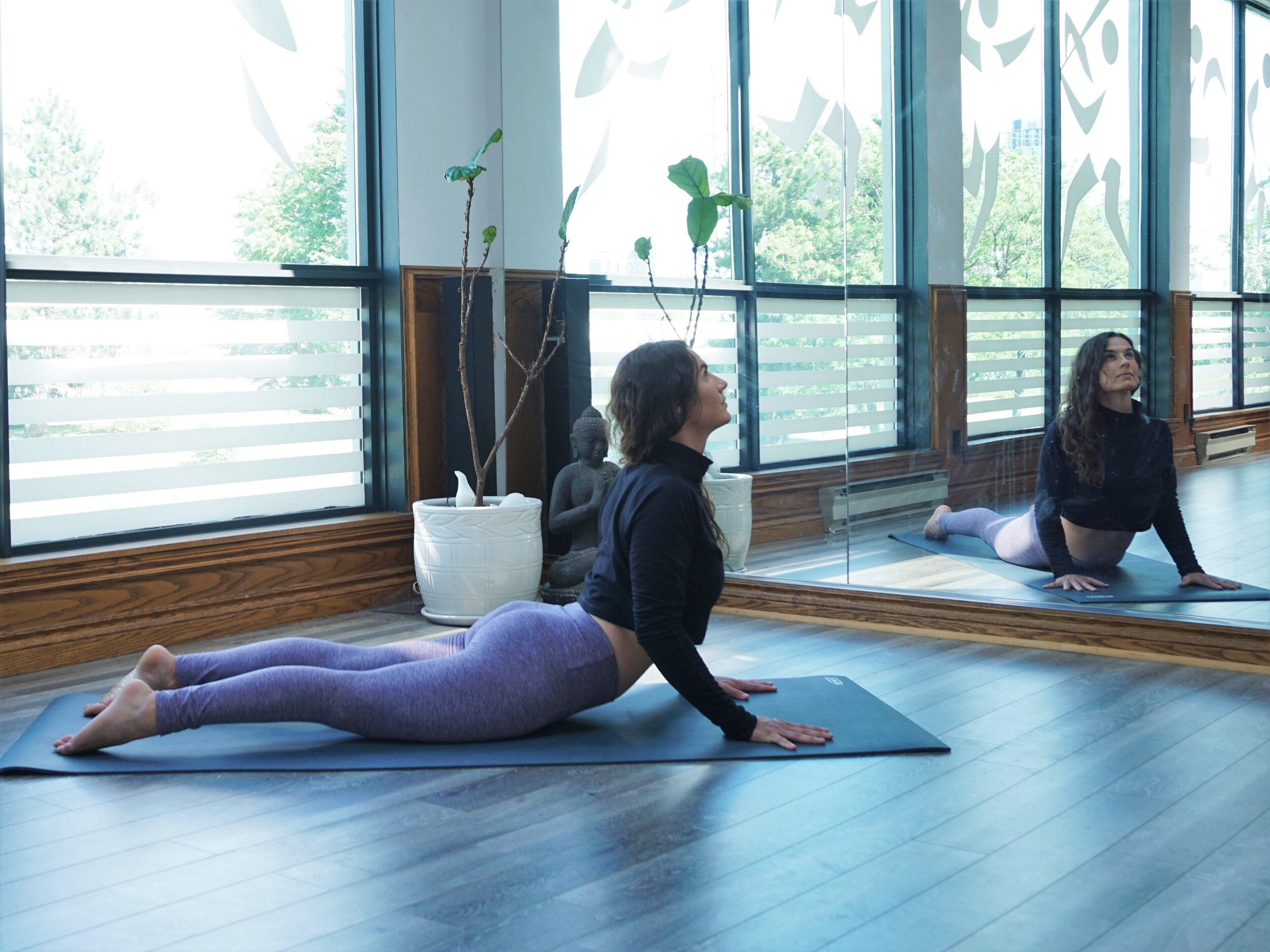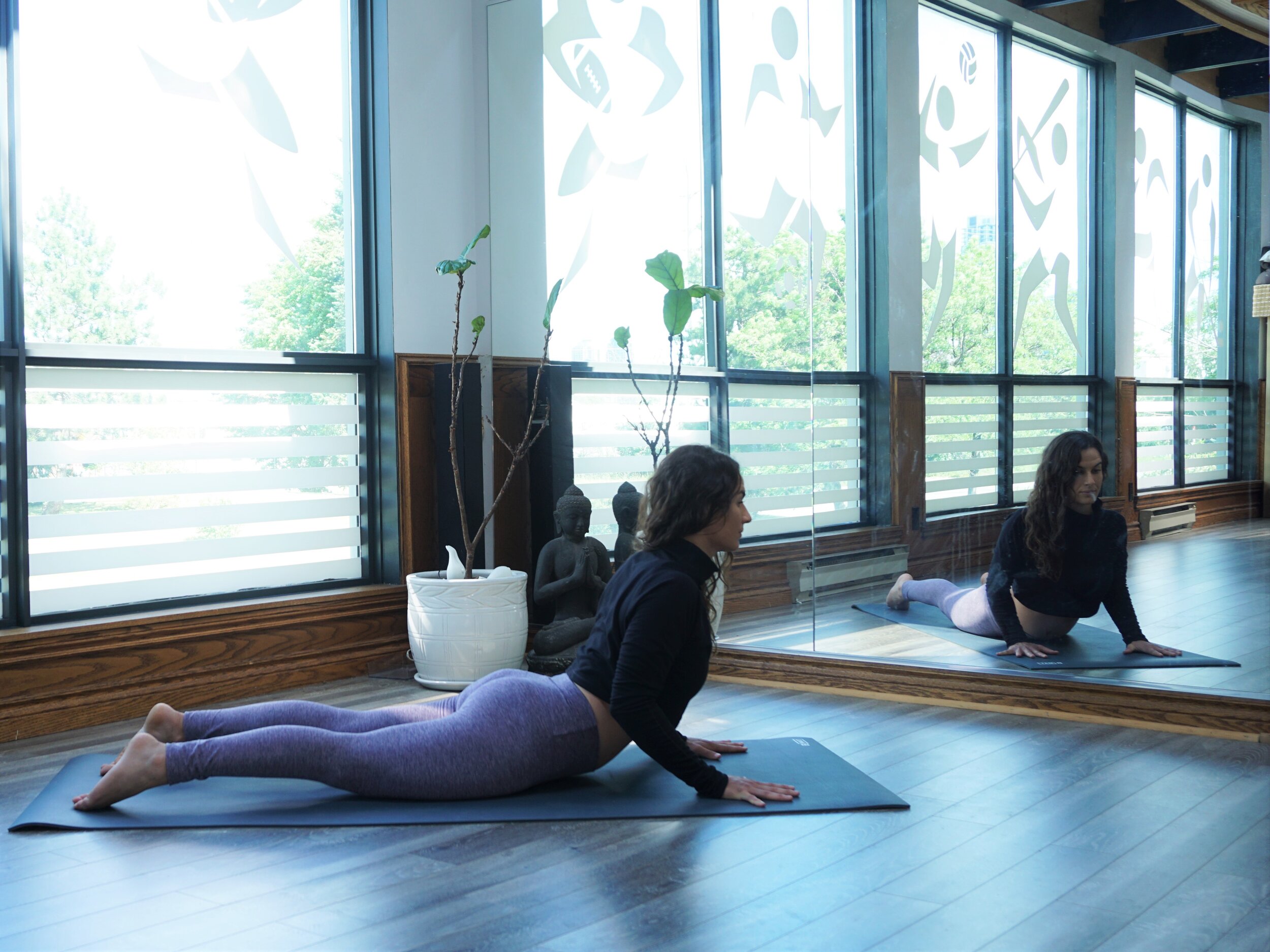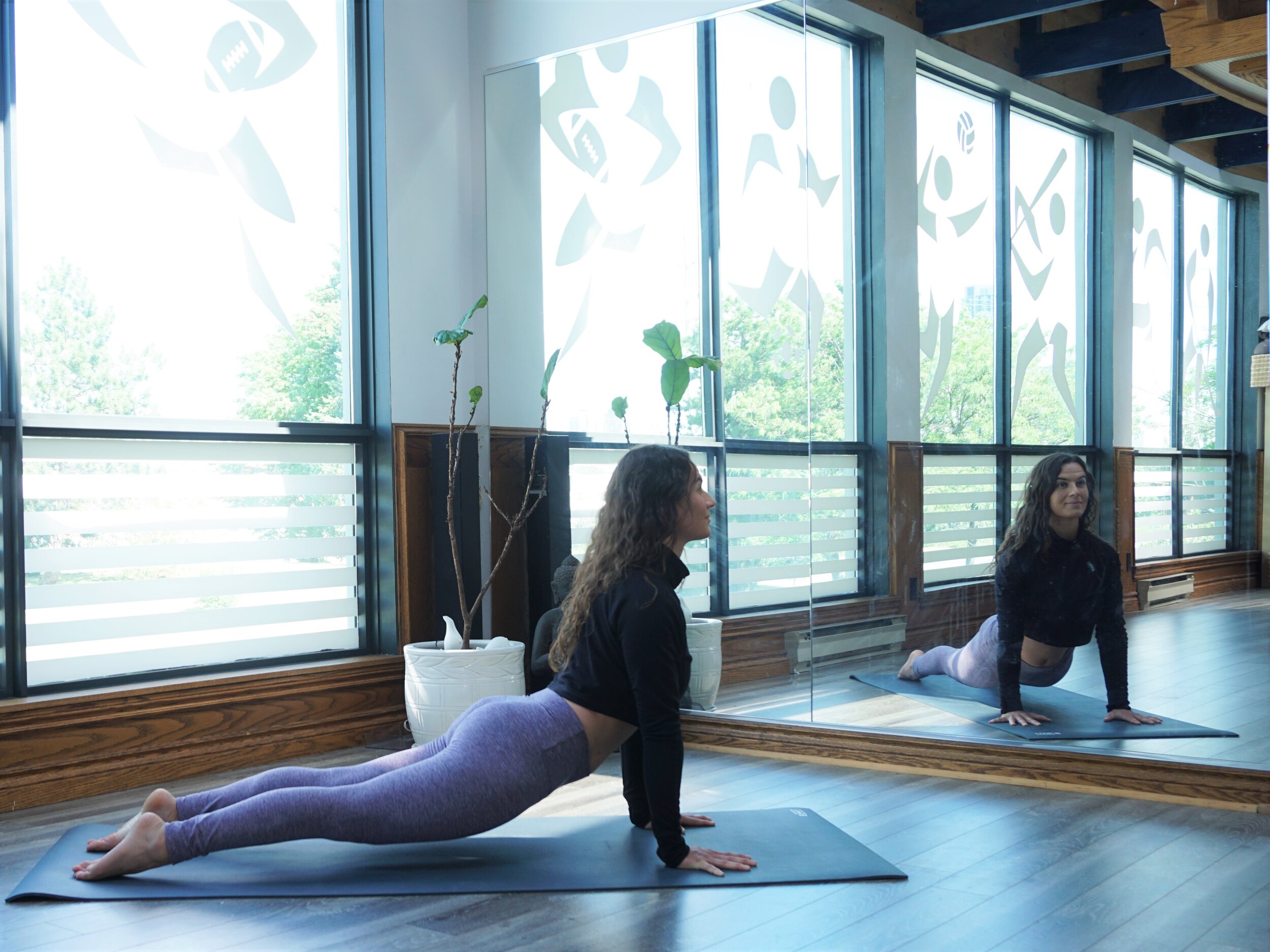What is the Difference Between Cobra Pose and Upward Facing Dog Pose / Bhujangasana and Urdhva Mukha Svanasana?
Cobra Pose or Bhujangasana and Upward Facing Dog Pose or Urdhva Mukha Svanasana can look quite similar at first glance. With a greater attention to detail and a bit of explanation, you’ll be able to notice the difference next time you see them.
Let’s begin with discussing the similarities between the two:
Both Backbends
Both Prone Positions (on your belly)
Toes are pointed and tops of the feet are down on the mat
Legs and glutes are engaged
Hands are down on the mat
Chest is lifted, shoulder blades are engaged
Cobra Pose / Bhujangasana
Upward Facing Dog Pose / Urdhva Mukha Svanasana
Now that you know all of the similarities between the two, let’s discuss the main differences!
CONTACT POINTS- which parts of the body have contact with the mat.
In Cobra Pose (Bhujangasana), the tops of the feet, knees, thighs, pelvis and hands all press down on the mat
In Upward Facing Dog (Urdhva Mukha Svanasana), just the tops of the feet and the hands press down to lift the knees, thighs and pelvis off the mat.
ARMS POSITIONING- where the wrists are located in relation to the shoulders.
In Cobra Pose (Bhujangasana), the hands are in front of the body, creating a diagonal line from the wrists to the shoulders. Arms are typically bent, but can be fully straight for a deeper backbend. The hands and arms help to lift the upper body off the mat and bear most of the weight, which is much less than Upward Facing Dog. Typically, you will bring the hands underneath the shoulders before lifting the upper body off the mat to line them up properly. Be sure to keep the elbows tucked in close to the body!
In Upward Facing Dog (Urdhva Mukha Svanasana), the hands are directly underneath the shoulders, creating a straight line from the wrists to the shoulders. Stacking the shoulders over the wrists helps to stabilize the body because it is bearing more weight by lifting the upper and lower body (except the feet) off the mat. Keeping a microbend in the elbows will help to engage more muscles in the shoulders and keep the elbows from hyperextending. Place the hands down on your mat at your sides so you make a 90 degree angle at the elbow before lifting up. This placement will help keep the wrists underneath the shoulders as you lift into Upward Facing Dog.
DEPTH OF BACKBEND- how much spinal extension is necessary to perform each asana.
Because Cobra Pose (Bhujangasana) requires the pelvis to stay on the mat, the main areas of the body that dictate how far the spine extends (back bends) are the hands. There are so many levels of depth in the amount of bend in this pose, that it is more easily attainable and safer for most yogis.
Baby Cobra (Ardha Bhujangasana)
Baby Cobra (Ardha Bhujangasana) is a great variation to start with. The hands do not touch the mat, they simply float just below the shoulders as you lift the chest using the muscles in lower back and shoulders. If this is too easy, you can simply press the hands down onto the mat underneath the shoulders and lift the chest up until you have found a desirable amount of bend in the back. The amount of bend in the arms is not important, but making sure they are do not splay out to the sides is! Keep those elbows tucked!
Upward Facing Dog (Urdhva Mukha Svanasana) is quite a deep backbend and it is not a posture I would recommend to those that are just starting out. Because the arms are straight, it already creates a deep bend in the back. Because you are lifting the body off the mat, the lower back has more load to deal with and the shoulders, arms, wrists and hands require more strength to hold the body up. There is no way to decrease the amount of bend in the back without using some sort of prop. To decrease the amount of bend, you’ll need to increase the amount of space between the hands and the mat. You can do this by using a chair, or putting blocks underneath the hands. This will put more weight in the feet and decrease the amount of bend and weight in the lower back!
———————-
Knowing the differences between the two postures, think about which one would be best for you to use in your practice. While performing Sun Salutations or Vinyasas, Cobra Pose (Bhujangasana) is the best alternative to Upward Facing Dog (Urdhva Mukha Svanasana. If you’re looking for a wrist-free option, Sphinx Pose or Supported Cobra Pose (Salamba Bhujangasana) is best to perform because the weight rests in the elbows and forearms, with no bend in the wrists. To perform this, lift the chest off the mat and place the elbows directly underneath the shoulders with the forearms and hands resting down on the mat pointing forward.
Remember to always be safe when performing backbends. Know your limits and move slowly and mindfully into each posture!
xx
Yoga Alignment




